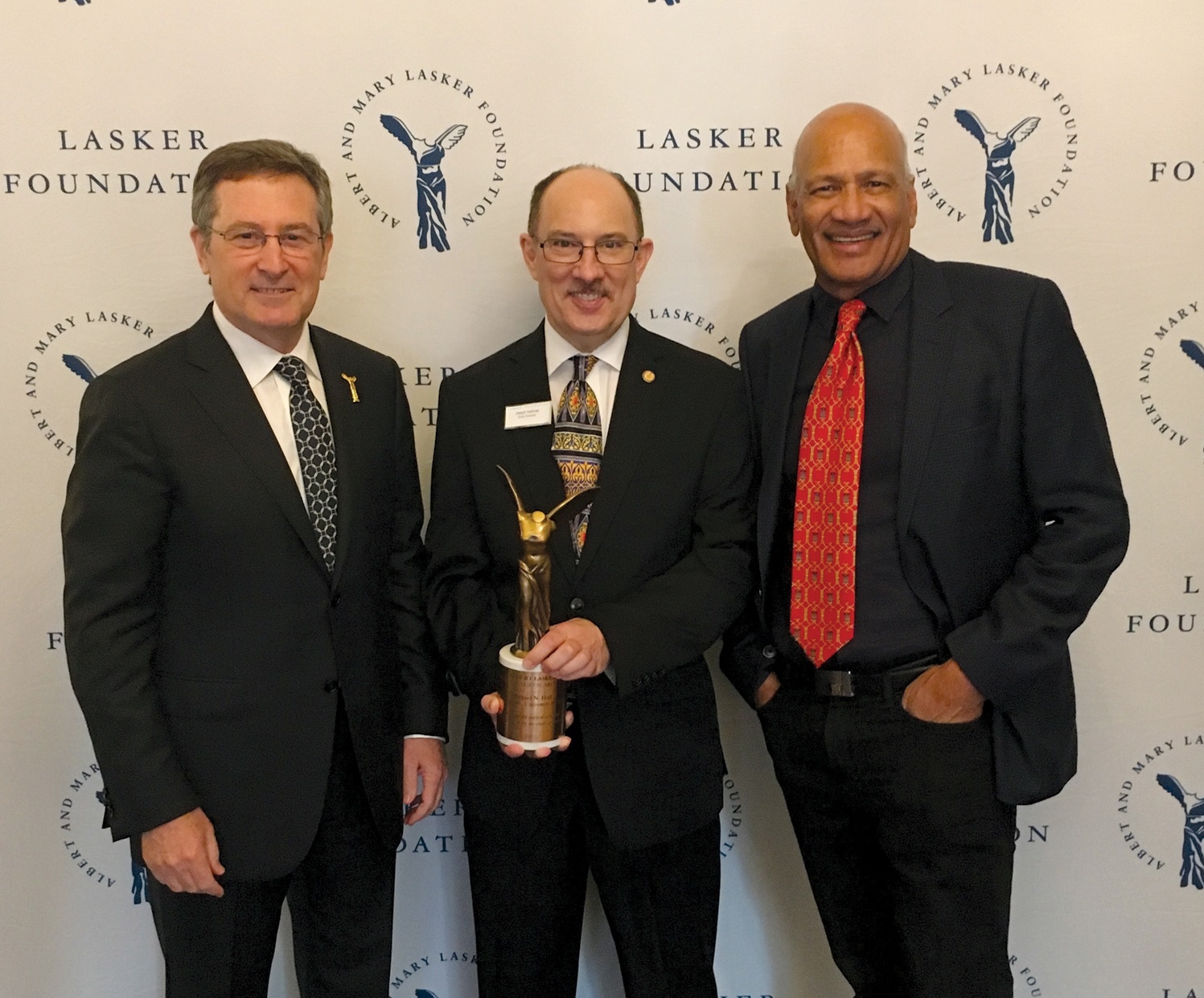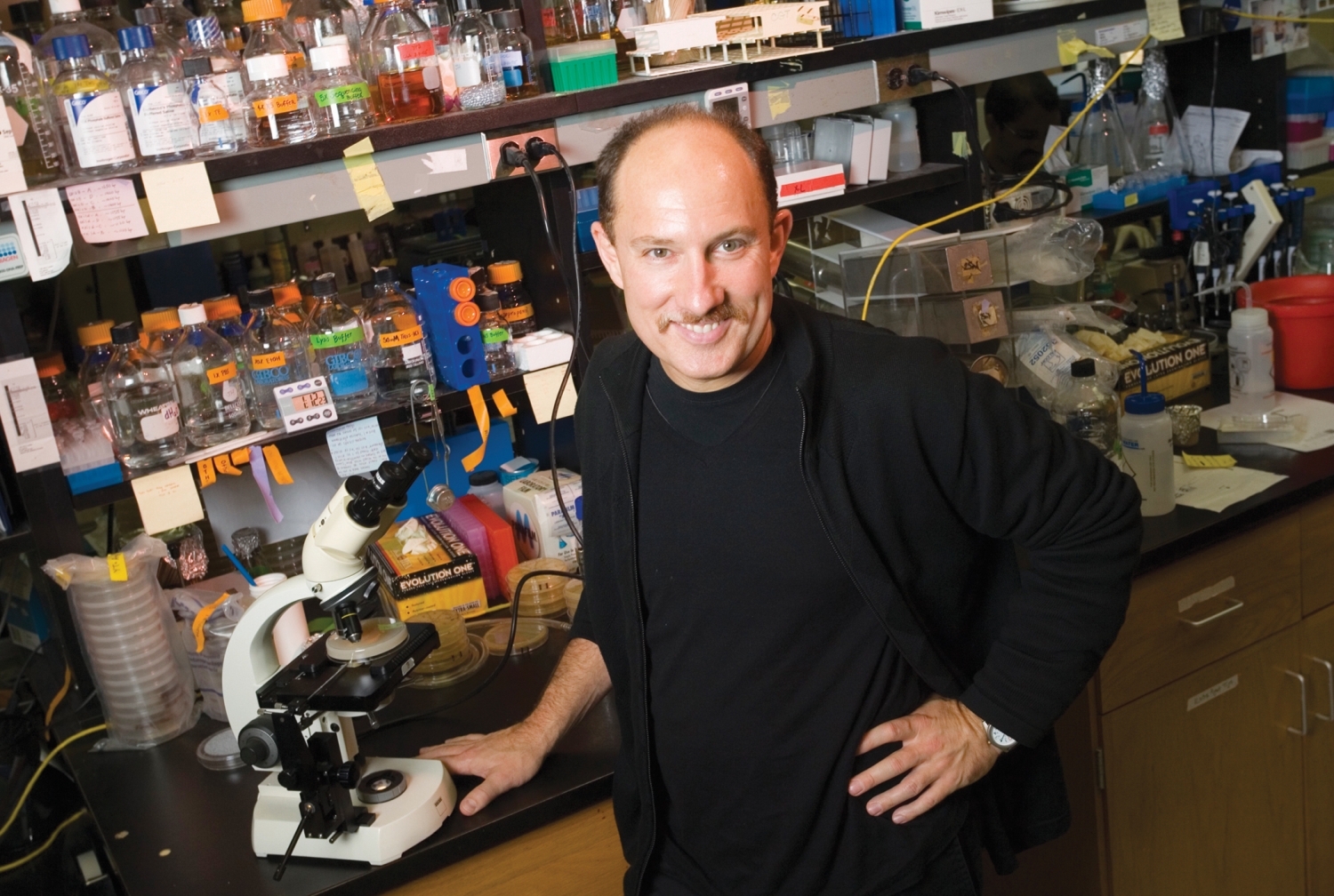As a student in the Tri-Institutional MD-PhD program, Dr. Joseph Heitman, MD ’92, was thrilled to be training as a physician-scientist—someone who would be, as he puts it, an “ambassador” to bridge the sometimes disparate worlds of medicine and basic research. Yet in 1989, with his doctoral work at The Rockefeller University complete and only about 18 months to go at Weill Cornell Medical College, Dr. Heitman felt something was missing. So he requested a leave of absence to do a long-term fellowship at the Biozentrum of the University of Basel in Switzerland, one of the world’s leading centers for molecular and biomedical research. “It was very unusual at the time,” Dr. Heitman says of the decision to allow him to pursue a different path so late in his studies. “It required both deans to agree, but they were highly supportive.”
As a postdoc in Basel, Dr. Heitman joined the laboratory of Dr. Michael Hall, a young, up-and-coming molecular biologist who’d recently started his own research team as an assistant professor at the Biozentrum. There, Dr. Heitman spearheaded experiments that ultimately helped Dr. Hall figure out that a group of proteins called “target of rapamycin” (TOR) plays a central role in controlling cell growth—a finding that has implications for the treatment of cancer, diabetes, cardiovascular disease and more. In 2017, nearly three decades later, this groundbreaking discovery earned Dr. Hall one of the most coveted prizes in medical science: the Albert Lasker Award for Basic Medical Research, an honor that has often presaged a Nobel.
Dr. Heitman says he’s pleased that Dr. Hall was recognized for his pioneering work and that the Lasker Foundation noted his own contributions in the award citation. But he’s always been most excited about the potential clinical applications of these findings to save lives or improve human health. Says Dr. Heitman, now chair of molecular genetics and microbiology at Duke University Medical Center: “Advancing medicine to do the greatest good—for me, that’s the prize.”

Dr. Heitman (center) at the Lasker Awards ceremony with former research collaborators Dr. Hall (left) and Dr. Movva.
While in Dr. Hall’s lab, Dr. Heitman was initially focused on a different project from the work that would lead to the Lasker breakthrough; he was studying how proteins are imported into a cell’s nucleus, but soon realized that it wasn’t yielding results. “Basically,” he says, “it was crashing and burning.” At the library one day, he came across a journal article describing how the drug cyclosporin could be studied in a fungus akin to yeast. Dr. Heitman knew about cyclosporin from his medical training; it was given to transplant patients to prevent organ rejection. There were also two experimental drugs in the pipeline with similar properties, including one called rapamycin. So Dr. Heitman asked Dr. Hall if he could change tracks and use yeast to examine this class of immunosuppressants.
Doctors knew that these drugs acted on specific cells in the immune system—but exactly how they worked was a mystery. And while today scientists recognize that yeast and other fungi are more closely related to animals than to plants, back then yeast was largely considered too different to use in drug research. “People thought this was completely heretical—that you would study an immune drug for humans in a model yeast system,” says Dr. Heitman. “You’d tell people what you were doing and they’d say, ‘That’s the craziest thing I’ve ever heard.’” Yet Dr. William Holloman, a professor in Weill Cornell Medicine’s Department of Microbiology and Immunology who taught Dr. Heitman in medical school, isn’t surprised that his former student would embrace an unconventional approach. “Joe was always very curious,” says Dr. Holloman. “This certainly wasn’t widely accepted at the time, so recognizing that there could be a translation was very insightful of him.”
Dr. Hall, too, says he thought the idea was worth pursuing. He knew that Dr. Rao Movva, a scientist at nearby Sandoz Pharmaceuticals, was also doing work in this area and suggested that they collabo- rate. Studies by Drs. Heitman, Movva and Hall uncovered two previously unknown proteins—named TOR1 and TOR2—and showed how they were crucial to rapamycin’s success in patients. “Joe was an outstanding, creative postdoc who initiated our rapamycin-related research,” says Dr. Hall, who remains on the Biozentrum faculty and has won numerous honors including the 2014 Breakthrough Prize in Life Sciences. “His seminal work was key in the elucidation of rapamycin action and the discovery of TOR—and, most importantly, led to a paradigm shift in how we think of cell growth.”
After Dr. Heitman returned to New York to complete his medical studies, Dr. Hall continued the research, eventually proving that TOR is a key in regulating cell growth. That knowledge upended a long-standing theory, since it had previously been assumed that there was no mechanism controlling the process. Now, scientists are using information about TOR to develop new interventions for an array of conditions; for instance, there are several TOR-related medications currently in use to prevent and treat organ and tissue rejection, to reduce the narrowing of blood vessels in cardiology patients, and as chemotherapeutic drugs for cancer. Plus, Dr. Heitman says, pre-clinical work is currently being done on TOR’s potential role in neurological diseases, vaccine effectiveness, aging and metabolic disorders like diabetes.
For Dr. Heitman, the year and a half he spent in Basel changed his career trajectory: he decided to forgo a medical residency and focus on research. At Duke since 1992, he has continued using yeast and other fungi to understand human ailments, most recently studying infectious disease in transplant patients and other immunocompromised people. He has received numerous honors over the years, including a MERIT award from the National Institute of Allergy and Infectious Diseases and a Burroughs Wellcome Scholar Award in Molecular Pathogenic Mycology. An editor for several journals including PLOS Genetics, Genetics and PLOS Pathogens, he is an elected fellow of such organizations as the American Society for Clinical Investigation, the American Academy of Microbiology and the American Association for the Advancement of Science. “It’s not just an abstract business of solving scientific puzzles; what you do in biomedical research impacts real patients and real lives,” Dr. Heitman says. “And the sooner you get to those life-saving advances, the better.”
— Heather Salerno
This story first appeared in Weill Cornell Medicine, Vol. 17. No. 1

